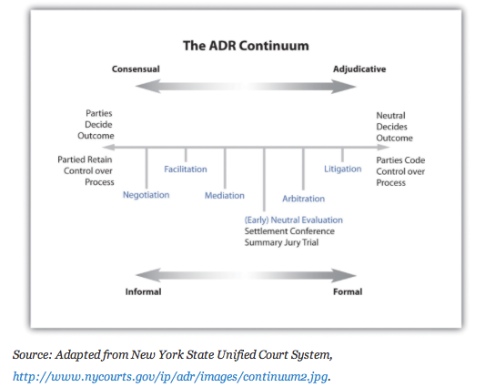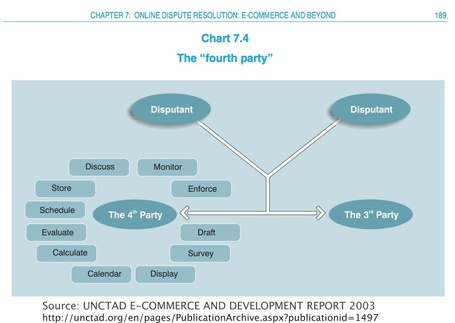ODR - What is It?
In 2004 Alan Gaitenby, one of the early hosts of the annual Cyberweek conference, defined Online Dispute Resolution in the following way:
"Online Dispute Resolution is the application of Alternative Dispute Resolution (ADR) practices and theories with networked information technology to manage conflict. Comprised primarily of online mediation, negotiation, or arbitration systems ODR also includes information management tools for informal conflict management by individuals and organizations." emphasis added (Wiley and Sons Internet Encyclopedia 2004)
As this definition suggests, ODR is a potentially quite large and diffuse area of practice. In the 1990s, most people imagined that Online Dispute Resolution would take existing dispute resolution methods such as mediation or arbitration and simply replicate them online and at a distance. Thus, a mediator would use technology to convene a meeting between two people who were having a conflict and help them communicate and problem solve their way to a solution. The theoretical concepts provided in this module will focus on this level of communication assistance primarily, but this is not all that ODR represents.
As time and technology has progressed, our ideas about the ways that communications technology can assist in dispute resolution (and dispute prevention) has expanded to incorporate a much broader range of possibilities, including things like computer-assisted negotiation optimization, online arbitration, and crowd-sourcing of potential solutions. These technology-assisted techniques extend the spectrum of alternative dispute resolution (ADR) methods that have become common.

by Terence Lau and Lisa Johnson.
Technology as the "Fourth Party"
We now tend to think of the computer and technology as "the fourth party" in dispute resolution, bringing new capabilities to the table. This concept was first articulated by Ethan Katsh and Janet Rifkin in their early book Online Dispute Resolution: Resolving Conflicts in Cyberspace (2001, Jossey Bass). The image below, from a 2003 United Nations conference report on E-Commerce and Development, depicts the many ways that technology can provide powerful support for conflict resolution practitioners.

Licensed under the Creative Commons Attribution Non-commercial No Derivatives 3.0 License
For Educational Use Only